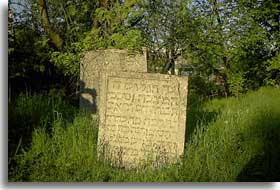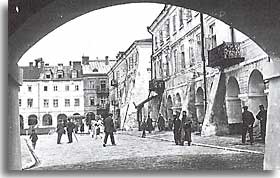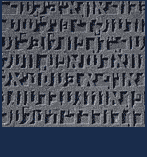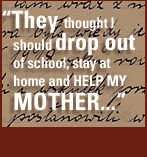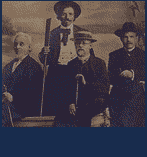

Institutions
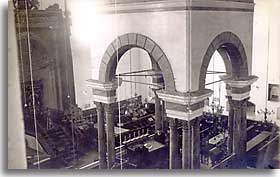

A look at Lublin's physical institutions during the years between the two World Wars (1919-1939) would have revealed at least 11 synagogues, the greatest of which - the Maharshal Shul - was an important architectural landmark and a gem among Jewish buildings. Constructed in 1567 in honor of Rabbi Shlomo ben Yekhiel Luria (aka "Maharshal"), the Maharshal Shul was the stone and brick embodiment of the Lublin Jewish community's growing wealth and desire for permanence. The building destroyed by fire and rebuilt in the 17th century, actually consisted of two synagogues. Together they seated 3,000 worshippers. The synagogue was destroyed by Nazi aerial bombardment in September 1939 - today only a few etchings of its interior remain to remind us of its magnificence.

Lublin also had a "preacher's house" where visiting rabbis and scholars stayed and taught. There was also a chevra kaddisha  (burial society), which collected funds and arranged for burials, both important functions within the Jewish community. There was an old Jewish cemetery, established in the 1500s, and a new cemetery set up early in the 19th century.
(burial society), which collected funds and arranged for burials, both important functions within the Jewish community. There was an old Jewish cemetery, established in the 1500s, and a new cemetery set up early in the 19th century.
In the interwar period (1919-1939) a full range of Jewish schools existed within Lublin including religious, yeshivot  for talented older students, girls' schools (starting around the turn-of-the-century), secular and religious Zionist
for talented older students, girls' schools (starting around the turn-of-the-century), secular and religious Zionist  schools, Hebrew schools (starting in 1897), the Zionist Tarbut
schools, Hebrew schools (starting in 1897), the Zionist Tarbut  (Culture) schools, the CYSHO Bundist
(Culture) schools, the CYSHO Bundist  schools of the 1930s, and the Polish State schools. In the 20th century, cultural and educational integration between Lublin's Jews and Poles was still slow to take hold, but it had begun. An earlier failure at achieving the goal of integration, described in an 1817 letter from non-Jewish Lublin school administrators to their state superiors, exemplifies some of the difficulties presented. It is not possible, the administrators wrote, "to persuade the [Jewish] population to send their children to schools serving Catholic children jointly. The Jews, being unenlightened and sunk in superstitions, do not dare, despite our many rebukes, to dress their children in non-traditional clothing. They do not dare remove their skullcaps nor cut off their side-curls. Although the Jews in Lublin did approach [us] and expressed a desire to send their children to the elementary schools, when they learned of the terms of admission they stated that they were unable to fulfill those conditions."
schools of the 1930s, and the Polish State schools. In the 20th century, cultural and educational integration between Lublin's Jews and Poles was still slow to take hold, but it had begun. An earlier failure at achieving the goal of integration, described in an 1817 letter from non-Jewish Lublin school administrators to their state superiors, exemplifies some of the difficulties presented. It is not possible, the administrators wrote, "to persuade the [Jewish] population to send their children to schools serving Catholic children jointly. The Jews, being unenlightened and sunk in superstitions, do not dare, despite our many rebukes, to dress their children in non-traditional clothing. They do not dare remove their skullcaps nor cut off their side-curls. Although the Jews in Lublin did approach [us] and expressed a desire to send their children to the elementary schools, when they learned of the terms of admission they stated that they were unable to fulfill those conditions."





